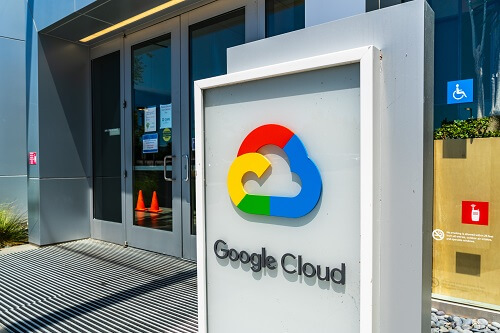
- GCUL enters personal testnet, aiming for 2026 industrial rollout.
- Python-based sensible contracts improve developer accessibility.
- Google-CME partnership exams 24/7 settlement for funds and collateral.
Google Cloud has formally stepped into the blockchain infrastructure house with its Layer-1 platform, Google Cloud Common Ledger (GCUL), which entered a personal testnet part in late August 2025.
The transfer positions Google as an rising competitor within the institutional blockchain market, providing impartial, high-performance distributed ledger know-how designed for monetary establishments and cost suppliers.
GCUL supports Python-based smart contracts, making it extra accessible for builders and enabling subtle on-chain programmable logic.
What it means for monetary companies and blockchain adoption
Google’s GCUL is designed to function a impartial infrastructure layer, tackling a key problem in current blockchain ecosystems, the place monetary companies usually hesitate to construct on networks managed by opponents.
For example, stablecoin issuers like Tether usually keep away from blockchains developed by rivals akin to Circle, whereas cost suppliers like Adyen have been cautious about adopting Stripe’s blockchain options.
By sustaining neutrality, GCUL may drive broader institutional adoption, permitting any monetary establishment to develop blockchain purposes with out aggressive conflicts.
The Google-CME Group partnership, introduced publicly in March 2025, underpins GCUL’s early improvement and testing.
CME Group has accomplished preliminary integration and testing, specializing in utilizing the blockchain to allow 24/7 settlement of collateral, margins, and charges, with the potential to cut back prices and enhance liquidity.
Full testing with market members and the industrial rollout of companies are anticipated in 2026.
Google’s blockchain addresses the surging demand for stablecoin transactions and sooner cost options.
In line with a examine cited by Google, stablecoin volumes tripled in 2024, reaching $5 trillion in natural transactions, whereas whole volumes climbed to $30 trillion globally.
The report highlighted that fragmented cost programs proceed to drive excessive prices and inefficiencies in cross-border commerce, with potential international GDP losses projected at $2.8 trillion by 2030.
GCUL goals to deal with these challenges by offering a clear, low-latency transaction infrastructure.
What we learn about GCUL’s know-how and market place
Technically, GCUL options Python-based sensible contracts, supporting versatile and extensively adopted programming requirements.
The platform is constructed not solely to streamline funds but in addition to perform as an infrastructure hub for capital markets, enabling native industrial financial institution cash on-chain and supporting agentic cost capabilities.
Google plans to broaden GCUL throughout its broader cloud ecosystem, granting entry to a large community of institutional companions and builders.
In contrast with different rising Layer-1 blockchain tasks, akin to Stripe’s Tempo and Circle’s Arc, Google emphasizes GCUL’s position as a impartial participant in monetary infrastructure.
Whereas Stripe’s blockchain prioritizes cost app efficiency and Ethereum compatibility, and Circle’s platform focuses on stablecoin transactions, international trade, and capital markets purposes, GCUL is designed as a extra open, much less vertically built-in Layer-1 answer, enabling interoperability throughout competing establishments.


